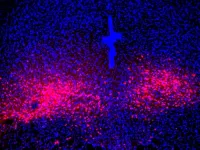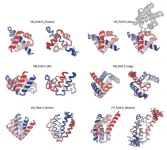Weather forecasting is important for various sectors, including agriculture, military operations, and aviation, as well as for predicting natural disasters like tornados and cyclones. It relies on predicting the movement of air in the atmosphere, which is characterized by turbulent flows resulting in chaotic eddies of air. However, accurately predicting this turbulence has remained significantly challenging owing to the lack of data on small-scale turbulent flows, which leads to the introduction of small initial errors. These errors can, in turn, lead to drastic changes in the flow states later, a phenomenon known as the chaotic butterfly effect.
To address the challenge of limited data on small-scale turbulent flows, a data-driven method known as Data Assimilation (DA) has been employed for forecasting. By integrating various sources of information, this approach enables the inference of details about small-scale turbulent eddies from their larger counterparts. Notably, within the framework of DA methods, a crucial parameter known as the critical length scale has been identified. This critical length scale represents the point below which all relevant information about small-scale eddies can be extrapolated from the larger ones. Reynold’s number, an indicator of the turbulence level in fluid flow, plays a pivotal role in this context, with higher values suggesting increased turbulence. However, despite the consensus generated by numerous studies regarding a common value for the critical scale, an explanation of its origin and its relationship with Reynold’s number remains elusive.
To address this issue, a team of researchers, led by Associate Professor Masanobu Inubushi from the Tokyo University of Science, Japan, has recently proposed a theoretical framework. They treated the process of DA as a stability problem. “By considering this turbulence phenomenon as ‘synchronization of a small vortex by a large vortex’ and by mathematically attributing it to the ‘stability problem of synchronized manifolds,’ we have succeeded in explaining this critical scale theoretically for the first time,” explains Dr. Inubushi. The letter, published in Physical Review Letters on December 18, 2023, is co-authored by Professor Yoshitaka Saiki from Hitotsubashi University, Associate Professor Miki U. Kobayashi from Rissho University, and Professor Susumo Goto from Osaka University.
To this end, the research team employed a cross-disciplinary approach by combining chaos theory and synchronization theory. They focused on an invariant manifold, termed as the DA manifold, and conducted a stability analysis. Their findings revealed that the critical length scale is a key condition for DA; and is characterized by transverse Lyapunov exponents (TLEs), which ultimately dictate the success or failure of the DA process. Additionally, based on a recent discovery showing Reynolds number dependence of maximal Lyapunov exponent (LE) and the relation of TLEs with maximal LE, they concluded that the critical length scale increases with the Reynolds number, clarifying the Reynolds number dependence of the critical length scale.
Emphasizing the importance of these findings, Dr. Inubushi says, “This new theoretical framework has the potential to significantly advance turbulence research in critical problems such as unpredictability, energy cascade, and singularity, addressing a field that physicist Richard P. Feynman once described as 'one of the remaining difficulties in classical physics.’"
In summary, the proposed theoretical framework not only enhances our understanding of turbulence, but also paves the way for novel data-driven methods that can enhance the accuracy and reliability of weather forecasting.
Let us hope for more accurate weather predictions soon!
***
Reference
DOI: https://doi.org/10.1103/PhysRevLett.131.254001
About The Tokyo University of Science
Tokyo University of Science (TUS) is a well-known and respected university, and the largest science-specialized private research university in Japan, with four campuses in central Tokyo and its suburbs and in Hokkaido. Established in 1881, the university has continually contributed to Japan's development in science through inculcating the love for science in researchers, technicians, and educators.
With a mission of “Creating science and technology for the harmonious development of nature, human beings, and society," TUS has undertaken a wide range of research from basic to applied science. TUS has embraced a multidisciplinary approach to research and undertaken intensive study in some of today's most vital fields. TUS is a meritocracy where the best in science is recognized and nurtured. It is the only private university in Japan that has produced a Nobel Prize winner and the only private university in Asia to produce Nobel Prize winners within the natural sciences field.
Website: https://www.tus.ac.jp/en/mediarelations/
About Associate Professor Masanobu Inubushi from Tokyo University of Science
Masanobu Inubushi is currently an Associate Professor at the Tokyo University of Science, Japan. He obtained his undergraduate degree in 2008 from the Tokyo Institute of Technology, Japan and PhD in Mathematics from the Research Institute for Mathematical Sciences (RIMS) at Kyoto University Graduate School in 2013. After working at NTT, Communication Science Laboratories from 2013–2018, he joined Osaka University as an Assistant Professor in 2018. Dr. Inubushi has published over 25 research works, which have received more than 500 citations. His research interests include fluid mechanics, chaos theory, mathematical physics, and machine learning.
Funding information
This work was partially supported by JSPS Grants-in-Aid for Scientific Research (Grants Nos. 22K03420, 22H05198, 20K20973, 20H02068, 19K14591, and 19KK0067).
END





